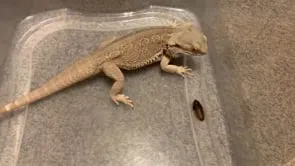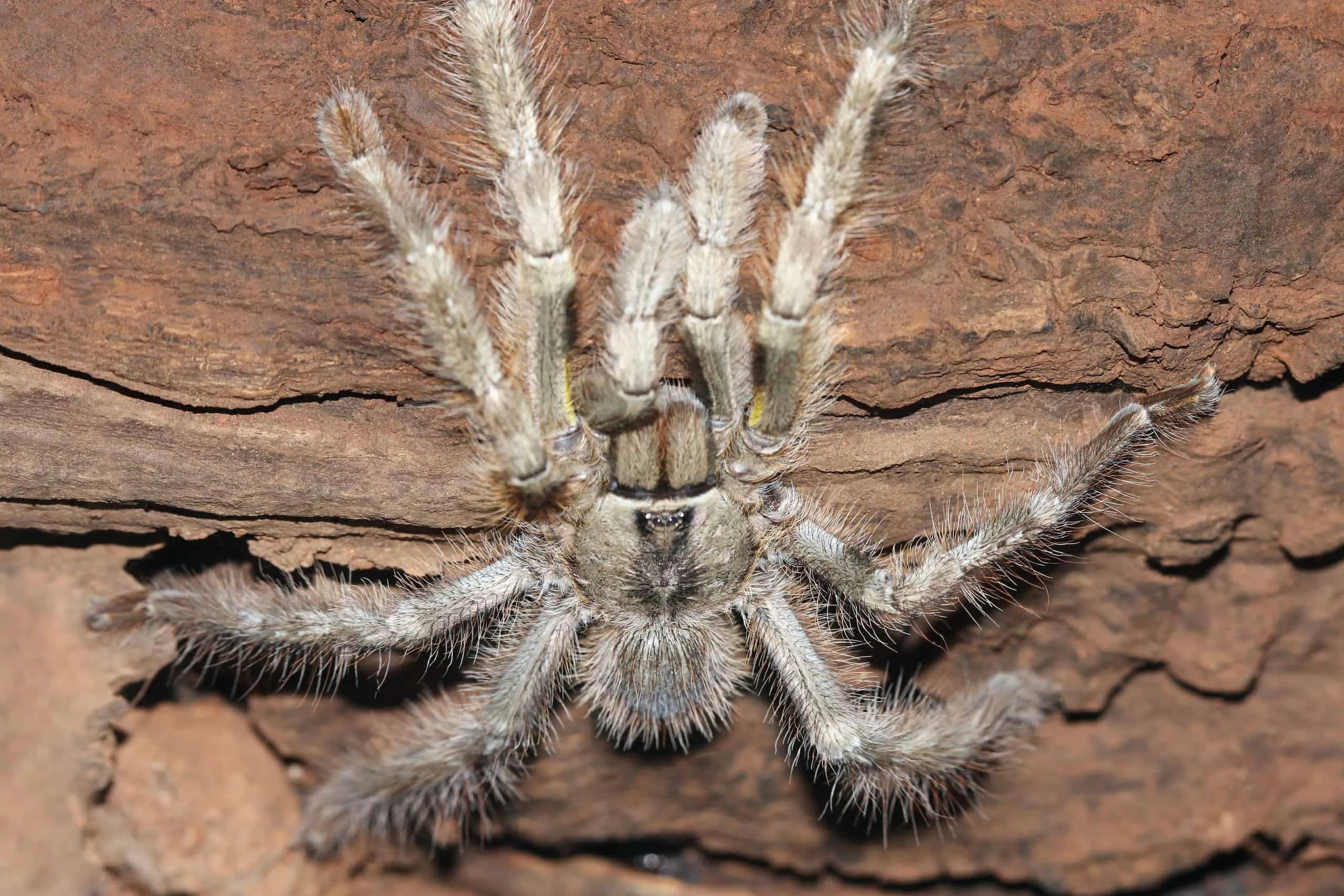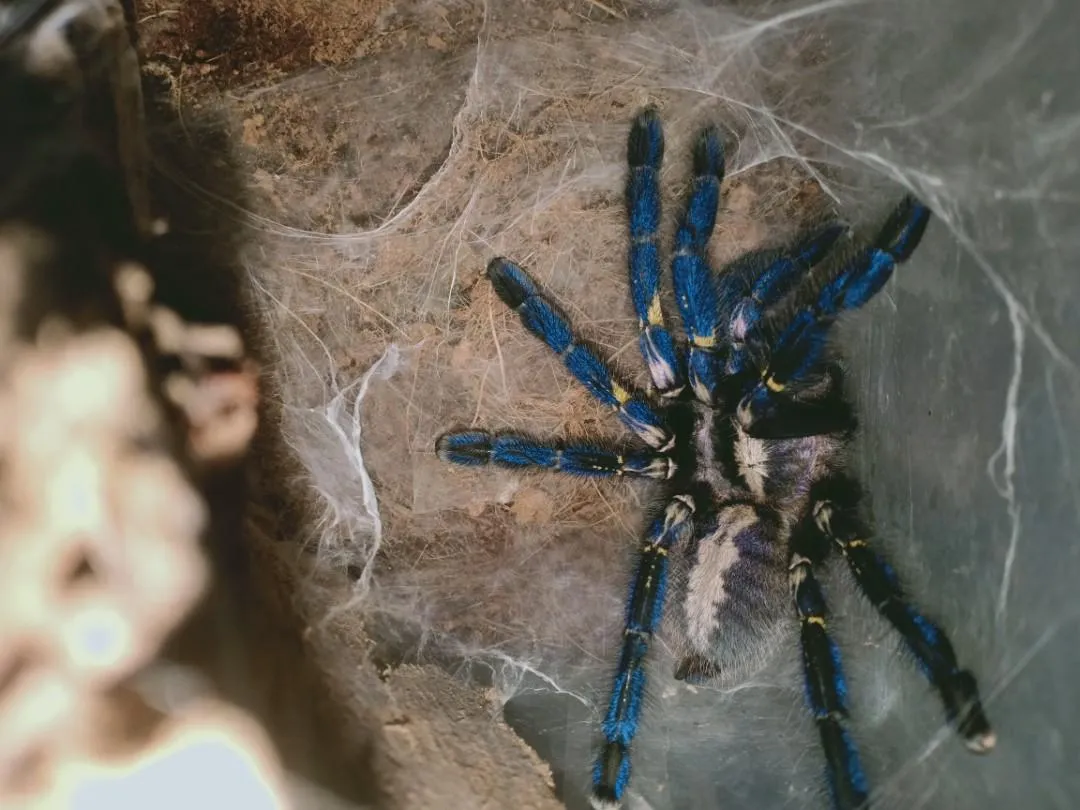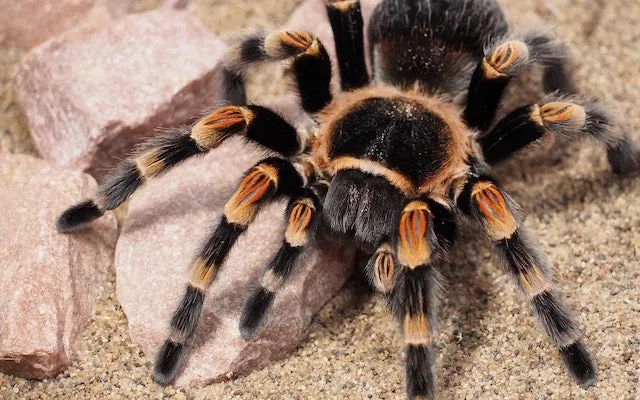What is a Tarantula Lifespan?
The tarantula lifespan is a fascinating aspect of these captivating arachnids, and one that often surprises many. These creatures, popular as exotic pets, exhibit a remarkable longevity compared to many other insects and invertebrates. Understanding their lifespan is crucial for any aspiring tarantula owner, as it directly impacts the commitment and care required. Tarantulas typically live for several years, with females generally outliving males by a considerable margin. This disparity is a key factor in their lifecycle and a significant point to consider when choosing a tarantula as a pet. The concept of tarantula lifespan is not just about years; it encompasses the entire lifecycle of the spider, from its early molting stages to its final days. It is determined by various factors ranging from genetics, diet, environment, and species.
Factors Influencing Tarantula Lifespan
Several factors intricately weave together to shape the lifespan of a tarantula. These elements play a pivotal role in determining how long a tarantula will thrive. The most critical aspects include the tarantula’s sex, diet, environment, and overall health. Understanding these variables is crucial for providing optimal care and ensuring the longevity of your pet. The intersection of these influences paints a detailed picture of what to expect and how to provide the best life possible for your tarantula, ranging from environmental conditions to the nutrition it receives.
Sex of the Tarantula

One of the most significant factors influencing a tarantula’s lifespan is its sex. Female tarantulas generally have a much longer lifespan than males. On average, females can live for 10 to 30 years, depending on the species, while males typically live for only 2 to 5 years. This difference is primarily due to the males’ shorter lifespan after reaching maturity, primarily driven by their purpose in reproduction. Mature males often die shortly after mating, whereas females continue to molt and grow, extending their lifespan significantly. Therefore, when considering a tarantula as a pet, the choice between male and female is a primary determinant in how long you can expect to share a home with your eight-legged friend. Knowing this can help prospective owners make informed decisions.
Diet and Nutrition
A tarantula’s diet is a cornerstone of its health and longevity. Providing a balanced and nutritious diet is paramount to ensure a long and healthy life. Tarantulas are primarily insectivores, feeding on a variety of insects such as crickets, mealworms, and roaches. The size and type of prey should be appropriate for the tarantula’s size and age. Overfeeding or providing prey too large can stress the tarantula. Conversely, underfeeding can lead to malnutrition and a shorter lifespan. Supplementing the diet with occasional vitamins and minerals, especially for captive tarantulas, can also benefit their overall health. Regular access to fresh water is also crucial. A well-nourished tarantula is a resilient tarantula, better equipped to withstand environmental challenges and live a full life.
Environmental Conditions
The environment in which a tarantula lives significantly impacts its lifespan. The ideal habitat replicates the tarantula’s natural environment. This includes maintaining appropriate temperature and humidity levels. Most tarantulas thrive in temperatures between 70 to 85 degrees Fahrenheit and humidity levels ranging from 60% to 80%. A properly ventilated enclosure prevents the buildup of harmful mold and bacteria. Substrate choice, like coco fiber or peat moss, is crucial for maintaining humidity and allowing the tarantula to burrow, which is a natural behavior. Providing hiding places, such as cork bark or artificial plants, helps reduce stress, promoting a longer and healthier life. Consistent monitoring and adjustments to the environment are essential to ensure your tarantula’s comfort and well-being, which directly impacts its lifespan.
Common Tarantula Lifespans

The lifespan of a tarantula varies significantly depending on its species. Some tarantula species live for a relatively short period, while others are known for their remarkable longevity. The environment and care provided play a key role, but the inherent genetic traits of each species are the primary determinant. Knowing the typical lifespan of the specific tarantula you own is crucial for setting realistic expectations. This knowledge allows you to plan and provide appropriate care throughout its life cycle. It also helps you to understand the long-term commitment involved in owning a tarantula. Different species exhibit distinct life cycles, and these differences contribute to the diversity and wonder of the tarantula world.
New World Tarantulas
New World tarantulas, originating from the Americas, generally have a moderate lifespan. Females of these species often live for 10 to 25 years. Their longevity is often attributed to their adaptability and tolerance of various environmental conditions. Some popular New World species include the Chilean Rose Hair tarantula and the Mexican Red Knee tarantula. These species are popular choices for pet owners due to their docile temperament and relatively easy care requirements. The longer lifespan of New World tarantulas makes them a worthwhile investment for pet owners who seek a long-term companion. These tarantulas’ ability to adjust to different settings is a key factor contributing to their longevity.
Old World Tarantulas
Old World tarantulas, native to Asia, Africa, and Australia, tend to have shorter lifespans compared to their New World counterparts. Females typically live for 5 to 12 years. The often more aggressive nature of Old World tarantulas and their specific environmental needs may contribute to this difference. Common Old World species include the Indian Ornamental tarantula and the Cobalt Blue tarantula. While these tarantulas are captivating, their care can be more demanding. Their care requirements and temperament require special attention. Consequently, potential owners should be well-informed about the specific needs of their Old World tarantula to ensure the best possible care and to appreciate the nuances of their shorter lifespan.
How to Extend Your Tarantula’s Lifespan

While a tarantula’s lifespan is largely determined by its species and genetics, there are several steps you can take to maximize its longevity. Careful and attentive care significantly impacts the health and lifespan of your pet. Creating the perfect environment and diet will allow your tarantula to thrive. The following tips provide the best practices in tarantula care to make the experience as rewarding as possible.
Provide a Suitable Habitat
Providing a suitable habitat is crucial for your tarantula’s health and lifespan. This begins with selecting an appropriately sized enclosure. The enclosure should be large enough for the tarantula to move around comfortably, molt, and burrow. The environment should mimic the tarantula’s natural habitat. Substrate plays a role in maintaining humidity and allowing for burrowing behavior. Ensure the temperature and humidity levels are correct for your tarantula’s species. Adding hiding places like cork bark or artificial plants can help reduce stress. Regular cleaning and maintenance of the habitat, removing uneaten food and waste, are also essential. A well-maintained habitat not only promotes the tarantula’s health but also enhances its overall well-being, extending its lifespan.
Maintain a Healthy Diet
A healthy diet is paramount for extending a tarantula’s lifespan. Feed your tarantula a varied diet of appropriately sized insects. The frequency of feeding depends on the tarantula’s age and size. Younger tarantulas, or spiderlings, require more frequent feeding than adults. Overfeeding can lead to health problems. It’s best to feed the tarantula until its abdomen is appropriately sized, and then allow it to digest. Supplementing the diet with occasional vitamin and mineral supplements can be beneficial, especially for captive tarantulas. Always ensure the tarantula has access to fresh, clean water. A balanced and nutritious diet is the cornerstone of a long and healthy life for your tarantula, and essential for the tarantula to live its lifespan.
Avoid Stress and Handling

Minimizing stress is crucial for a tarantula’s well-being and longevity. Excessive handling should be avoided, as it can cause stress and potentially lead to injury. Tarantulas are generally not meant to be handled frequently. They are best observed in their habitat. Providing a safe and secure environment reduces the risk of stress. Avoid loud noises, sudden movements, and other disturbances. Ensure the enclosure is placed in a quiet area of your home. Regular monitoring of the tarantula’s behavior can help you identify any signs of stress. Providing a stable and stress-free environment allows your tarantula to thrive and live out its full lifespan.
Fun Facts About Tarantula Lifespan
Here are some fascinating facts about tarantula lifespans. The longest-living tarantula on record was a female Grammostola rosea, which lived for over 30 years in captivity. Tarantulas molt their exoskeletons periodically as they grow, and this process can be affected by various factors, including their lifespan. The sex of a tarantula can sometimes be determined by examining the presence of spermathecae in females after molting. The tarantula lifespan is an intriguing aspect of their biology. Tarantulas can survive for extended periods without food, which is a testament to their resilience. Understanding these facts allows you to appreciate these creatures’ remarkable longevity.
Conclusion
Understanding the tarantula lifespan is essential for anyone considering keeping one as a pet. Factors such as sex, diet, and environment play a significant role in determining how long a tarantula will live. Providing the right care, including a suitable habitat, a healthy diet, and minimizing stress, can significantly contribute to extending a tarantula’s lifespan. By being well-informed and attentive to your tarantula’s needs, you can ensure that your eight-legged companion lives a long and fulfilling life. Appreciating the intricacies of tarantula lifespans allows us to admire these creatures. Owning a tarantula can be a rewarding experience, but it’s important to be aware of the commitment and to provide the best possible care.
